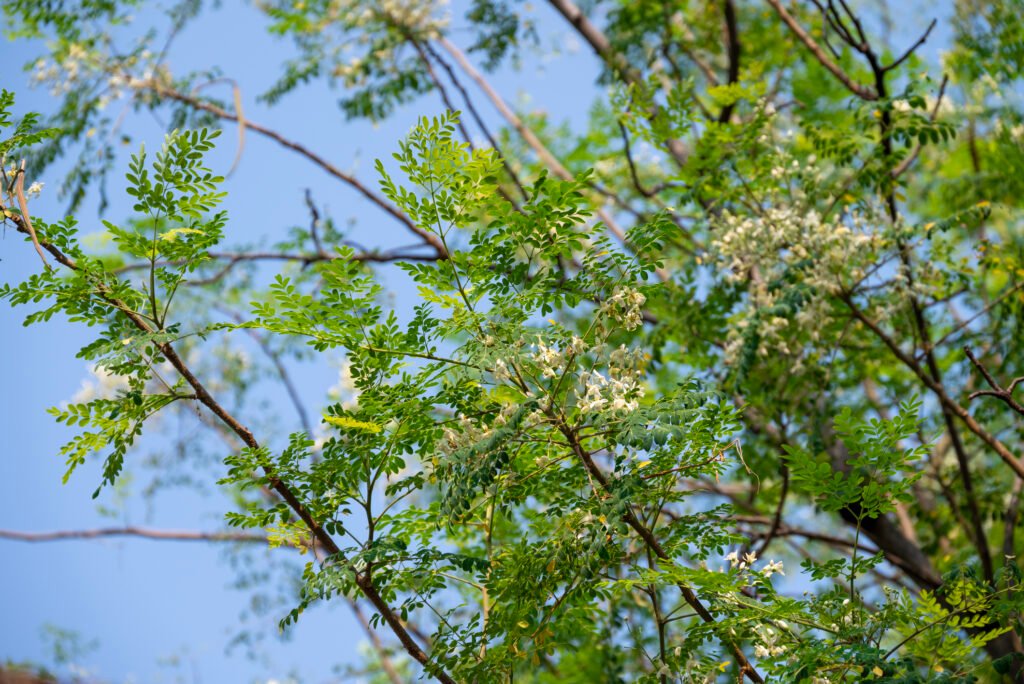In today’s fast-paced urban world, we often overlook the impact of our food choices on both the environment and our well-being. Most of what we eat travels thousands of kilometers before reaching our plates, contributing to carbon emissions, loss of freshness, and reliance on packaged foods. A simple yet powerful solution exists: growing moringa locally.
Reducing Food Miles for a Healthier Planet
Food miles refer to the distance food travels from the place of cultivation to the consumer. High food miles contribute to:
- Increased carbon emissions from transportation.
- Higher dependence on fuel and packaging.
- Loss of nutritional value due to extended storage.
By growing moringa locally—in home gardens, schools, and community spaces—we eliminate the need for transportation, reduce carbon footprints, and ensure access to fresh, nutrient-rich produce right at our doorstep.
Environmental Benefits of Local Moringa Cultivation
Moringa is a resilient, fast-growing tree that thrives in diverse climates with minimal water and care. Its environmental benefits include:
- Air Purification: Moringa absorbs carbon dioxide and releases oxygen, improving air quality in urban areas.
- Soil Enrichment: The tree enhances soil fertility and prevents erosion, making it an excellent addition to green spaces.
- Water Conservation: Unlike many crops, moringa requires very little water, making it ideal for drought-prone regions.
- Reduction in Plastic Waste: Growing moringa eliminates the need for plastic-packaged health supplements, contributing to a cleaner environment.
Reconnecting Children and Adults with Nature
In an age where screen time dominates leisure activities, engaging with nature is more important than ever. Growing moringa locally provides:
- Hands-on Learning for Children: Schools and families can use moringa cultivation as an opportunity to teach children about sustainability, nutrition, and responsibility.
- Wellness Benefits for Adults: Gardening is a stress-relieving activity that promotes mindfulness and physical activity.
- A Sense of Community: Shared moringa gardens in housing societies, parks, and public spaces bring people together and foster community well-being.
How to Start Growing Moringa Locally
Getting started with moringa is simple:
- Choose a Location: Moringa can be grown in pots (then transferred to a drum) on terraces, or open land. When you grow it in a drum the constraint of the lack of soil patch gets neutralised. Even if the building has concrete compound, Moringa can be grown in drums for the purpose of harvesting leaves.
- Plant the Seeds or Saplings: It grows quickly and requires minimal care.
- Ensure Regular Sunlight: Moringa thrives in sunlight and does not require excessive watering.
- Harvest the Leaves Regularly: Fresh leaves can be added to everyday meals for a nutritional boost.
Be Part of the Moringa Movement
Growing moringa locally is not just about personal health—it’s about making a lasting impact on the environment and the community. By planting a moringa tree, we take a step towards reducing food miles, promoting sustainable living, and reconnecting with nature. Let’s bring the power of moringa to every home, school, and neighborhood. Start today and be a part of Moringa Shakti!






